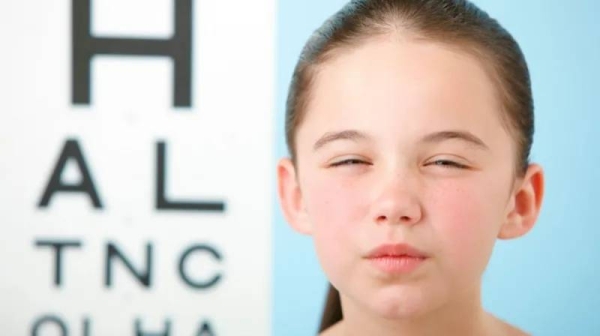A recent global analysis suggests that children’s eyesight is rapidly deteriorating, with one in three children now being short-sighted or unable to see things clearly in the distance. The study warns that the Covid-19 lockdowns had a negative impact on eyesight as children spent more time on screens and less time outdoors. Short-sightedness, also known as myopia, is becoming a growing global health concern and is projected to affect millions more children by 2050. While the highest rates of myopia are in Asia, with countries like Japan and South Korea showing rates as high as 85% and 73% respectively, countries like Paraguay and Uganda have much lower levels at about 1%.
The study, published in the British Journal of Ophthalmology, analyzed research involving over five million children and teenagers from 50 countries across all six continents. The research found that short-sightedness tripled between 1990 and 2023, reaching 36%. The increase in myopia was particularly notable after the Covid-19 pandemic, with children and teenagers spending more time indoors. Factors such as living in East Asia and genetic predisposition play a role in the development of myopia, but early education practices, such as starting schooling at a young age, can also contribute to the condition.
During the Covid-19 pandemic, where lockdowns forced children to stay indoors for extended periods, there was a noticeable decline in children and teenagers’ eyesight. The researchers suggest that by 2050, more than half of teens worldwide may be affected by myopia, with girls and young women having higher rates than boys due to spending less time outdoors. To reduce the risk of developing myopia, children should spend at least two hours outside every day, particularly between the ages of seven and nine. It is not entirely clear whether natural sunlight, outdoor exercise, or focusing on distant objects play a significant role in preventing myopia.
Experts recommend that parents take their children for regular eye tests, starting at the age of seven to ten. Additionally, parents should be aware that myopia tends to run in families, and children of short-sighted parents are three times more likely to develop myopia. While myopia cannot be cured, it can be corrected with glasses or contact lenses, and special lenses can slow down its progression in young children. In Asia, where myopia rates are high, innovative solutions such as glass classrooms that mimic outdoor learning environments are being used to address the issue. The concern is that high rates of myopia could lead to a surge in eye conditions in older age if left unaddressed.































